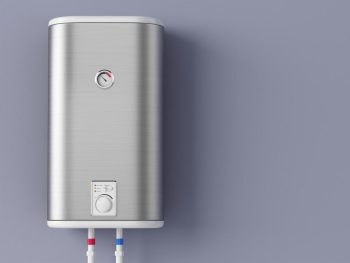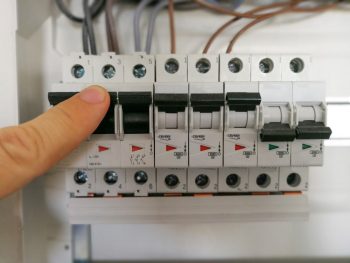
In the world of home appliances, a washing machine is a significant investment, and maintaining it in good working condition is essential. One common issue that might come up is a loose or damaged washing machine belt. This article will guide you through the process of tightening a washing machine belt, from identifying signs of a loose belt to the step-by-step tightening process, common mistakes to avoid, and safety precautions to take.
To tighten a washing machine belt, first, disconnect the power and water supply. Remove the access panel and inspect the belt. If it’s loose, locate the motor mounting nut and loosen it. Press the motor into the washing machine and tighten the mounting nut until the belt has the proper tension. Finally, reinstall the access panel and reconnect the power and water supply. Always remember to follow safety precautions and avoid common mistakes.
Signs Your Washing Machine Belt Needs Tightening
Before we dive into the process of tightening the washing machine belt, let’s first understand the signs that indicate a loose belt. The following symptoms may suggest that your washing machine belt requires attention:
- Burning Rubber Smell: This could indicate that the belt has suffered damage due to a stuck tub.
- Squealing Noise: A worn or loose belt may slip occasionally, creating a squealing noise that gets louder as the belt continues to wear down.
- Sluggish Spinning and Faulty Pumping: A loose belt can lead to slow spinning and inefficient pumping in the washing machine.
- Visual Inspection: Check the belt for burn marks, tears, or cracks, or if it is sitting tightly on the pulleys. Any sign of damage indicates that the belt needs to be replaced.
To inspect the belt, you may need to tilt the washing machine backwards or tip it over to access the belt. Always remember to unplug the washing machine and turn off the water supply before performing any inspection or maintenance.
Tools Required
To tighten a washing machine belt, you will need the following tools:
- Screwdriver (both Phillips and flat-head)
- Adjustable wrench
- Washing machine belt install tool (optional but recommended for easier installation)
- Cable tie
- Wire cutters
Step-by-Step Process to Tighten a Washing Machine Belt
Follow these steps to tighten a washing machine belt:
- Disconnect the power and water supply: Unplug the washer from the wall and turn off the water faucets. Disconnect the water hoses and the drain hose, and pull the washer away from the wall, leaving enough room to work behind the appliance.
- Remove the access panel: Locate the rear or bottom access panel and remove the screws holding it in place using a screwdriver. Set the screws and panel aside while you work.
- Inspect the belt: Press down on the belt with your thumb. If it easily gives more than 1/2 inch, it needs tightening. If the belt appears shiny, worn, or cracked, replace it with a new one.
- Loosen the motor mounting nut: Locate the motor mounting nut and loosen it using an adjustable wrench.
- Tighten the belt: Press the motor into the washing machine and downward or toward the edge of the appliance. With the motor pressed firmly in place, tighten the mounting nut by turning the wrench clockwise. Keep a finger on the belt; when you can depress it only about 1/2 inch with your thumb, you have reached the proper tension.
- Reinstall the access panel: Replace the access panel and secure it with the screws you removed earlier.
- Reconnect the power and water supply: Reconnect the power and water hoses, and push your washing machine back to its usual place.
Remember to consult your washing machine’s owner’s manual for any specific instructions or recommendations for your particular model.
Safety Precautions
When tightening a washing machine belt, safety should be your top priority. Here are some safety tips to follow:
- Always unplug the washing machine before working on it to prevent accidental shocks or injuries.
- Avoid wearing loose or dangling clothing that could get caught in the machine’s moving parts.
- Use the correct tools for loosening and tightening bolts.
- Keep hands and fingers clear of areas where belts enter sheaves and sprockets, as these can be pinch points.
- Test the machine after tightening the belt to ensure everything is working properly.
Common Mistakes to Avoid
Tightening a washing machine belt can be a simple task if done correctly, but there are common mistakes to avoid:
- Using the wrong belt: Ensure that you are using the correct belt for your specific washing machine model.
- Improper belt alignment: The grooved side of the belt should face inward and be properly aligned on the motor shaft or pulley and the drive pulley.
- Over-tightening or under-tightening the belt: The belt should not be too tight or too loose to ensure optimal performance.
- Not checking for obstructions: Before tightening the belt, inspect the drum and its housing for any obstructions that may prevent the drum from spinning.
- Ignoring signs of wear: Pay attention to signs of wear or damage on the belt, such as a burning rubber smell, which may indicate that the belt has been damaged.
Conclusion
Tightening a washing machine belt is a straightforward task that can be done with a few tools and a little bit of time. Regularly checking the belt and keeping it at the correct tension can help prolong the life of your washing machine and ensure it operates at peak efficiency. Remember, if you’re ever unsure about performing any maintenance on your washing machine, it’s always best to consult a professional.
Frequently Asked Questions
How often should I check my washing machine belt for wear and tear?
It is advisable to inspect your washing machine belt every six months to a year, or anytime you notice any unusual sounds or performance issues with your machine.
Can I use any kind of belt for my washing machine?
No, you should always use a belt that is specifically designed for your washing machine model. Using the wrong belt can lead to more significant issues with your washing machine.
What should I do if the belt is so damaged it can’t be tightened?
If the belt is severely worn out, cracked, or damaged, it’s best to replace it with a new one. Continuing to use a damaged belt can cause more harm to your washing machine.
Can I use any screwdriver to remove the access panel?
The type of screwdriver you need will depend on the screws used in your washing machine. Most washing machines use Phillips or flat-head screws, but always check before starting your work.
What if the burning rubber smell persists even after adjusting or replacing the belt?
If the burning rubber smell persists, it could indicate another issue with your washing machine, such as a faulty motor or pump. In such cases, it’s best to consult a professional appliance repair technician.












